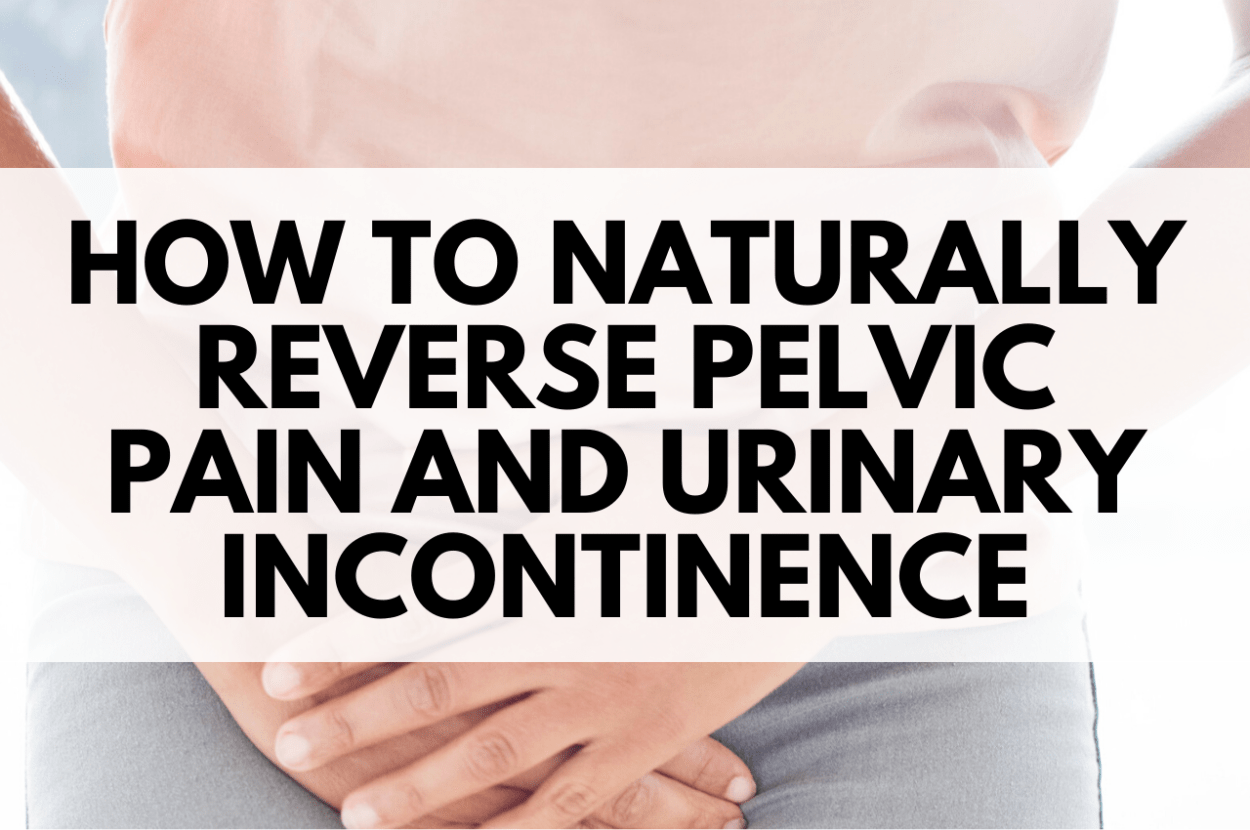If you are suffering from any of the symptoms of pelvic floor dysfunction — including pelvic pain, pelvic organ prolapse, incontinence or dyspareunia — or even if you’re simply wondering how to improve your pelvic health and engage in some preventive measures, this article for you. Read more about how to naturally reverse pelvic pain and urinary incontinence…
Maybe you’ve heard the term ‘pelvic floor’ and thought it was a bit confusing. Or maybe you’re very familiar with the term because you’re struggling with incontinence, pelvic organ prolapse, or pelvic pain and discomfort during sex.
If this is you, chances are good you’ve likely been offered very little in the way of information or options — most docs aren’t exactly well versed in this area of expertise, and many encourage women to resort to painful surgeries and injections.
Which is why I’m bringing you an in-depth look at the pelvic floor today. We’re going to explore exactly what this term means, what it looks like when issues start to arise, and steps you can take to heal yourself.
I’ve helped 15,000 women worldwide regain their pelvic health. You can believe that after treating that many women, I’ve seen it all. You are not alone! Over 30 million women in the U.S. have experienced pelvic pain or pelvic floor problems (1).
I promise that your pelvic pain and issues with your pelvic floor are treatable and you can heal. Just don’t give up.
My hope is that after reading this, you’ll be inspired to heal yourself and share what I’m teaching here with other women, too.
What is the pelvic floor?
The pelvic floor is the core of the female body. It is a group of muscles and tissue that support all of the organs in the pelvis, including the vagina, uterus, bowel, and bladder. These muscles control urinary function, bowel movements, and orgasms.
Let’s just say they’re an extremely important part of the female anatomy.
What can go wrong with my pelvic floor?
Unfortunately, all kinds of complications can arise in this group of muscles.
- Because we sit so much, they can become weak (2)
- They can be damaged during childbirth (3).
- And as we age, muscles tend to weaken if we don’t actively engage them regularly. In fact, around 40% of women aged 40-69 and 50% of women over 80 have symptoms of pelvic floor disorders (4).
Have you ever peed a little bit when you coughed or sneezed? Then, my friend, you’ve experienced one of the most common symptoms of pelvic floor dysfunction.
Urinary incontinence due to a compromised pelvic floor can range from a few drops of urine to full-blown loss of bladder control.
Some of the other symptoms that can also occur when the pelvic floor isn’t in peak form:
- Fecal incontinence
- Pelvic organ prolapse (when the bladder, uterus, or rectum drop into or out of the vagina) (5)
- Painful sex
- Inability to orgasm
- Difficult bowel movements
- Abdominal pain
- Pelvic pain
- Feeling full or pressure in the pelvis
- Painful urination
Pelvic Pain and Disorders – What are my options for treatment?
A full one-quarter of women have experienced episodes of involuntary leaking of urine (4).
Over 50% of the women in the U.S. experience a degree of pelvic organ prolapse, and 12% will have surgery for it (7).
And those are just the ones who have reported symptoms. Many of our sisters suffer in silence, too ashamed to tell anyone about their experiences.
Often, when they bring their concerns up to a doctor, they’re dismissed as simply “part of the aging process” or “what happens to everyone after childbirth.”
Even worse, most women are given a few standard treatment options:
- Opioid painkillers
- Surgery that can involve the placement of man-made mesh inside the vagina (of note: one of these procedures was just pulled from the market by the FDA (6)
- Vaginal injections
It breaks my heart. And I want every woman to know that they have other options.
Options that involve non-invasive techniques.
Options that leave you feeling empowered and not victimized.
In my practice, I help women every day to learn:
- Yoga moves
- Abdominal exercises
- Pelvic massage techniques
- Kegels — did you know there are over 13 types of these exercises?
- Sound healing meditations
- Breathwork
These techniques help you to take control of your pelvic floor and heal incontinence and prolapse. No knives, pills or needles required.
Also — I find that many women, after suffering from their conditions for so long become frustrated and exhausted after trying things that don’t work and being dismissed by doctors. Sometimes their partners inadvertently make them feel like they aren’t meeting their needs sexually. And this adds a certain level of psychological trauma to an already sensitive problem.
It’s one of the reasons I incorporate private communities into my therapies — so women can feel free to share their experiences with one another and feel seen and heard by others that feel the same way.
This kind of emotional healing is so powerful, especially when working on pelvic health. As women, the pelvis is the core of our being, the place where we create life. It’s more than just a bundle of muscles and tissue. And when we address all facets of our healing, from our core to our mindset, we can achieve miraculous results.
If you’re suffering from pelvic pain — there is hope
Pelvic pain and pelvic floor dysfunction can be heartbreaking. Many women suffer feelings of shame, embarrassment, and even guilt around these conditions.
Because our society has programmed us to believe that “a lady doesn’t talk about these things” we tend to suffer in silence.
And in many ways, we’re taught that we’re supposed to outsource our health to doctors, who must be smarter and wiser and more capable of healing us than we are — right?
Let’s end these stigmas and old paradigms now.
Half of the world is female and we can take control of the conversations surrounding our health, our bodies, and ultimately our healing processes. And when we do it together, we become even stronger.
If you are suffering from any of the symptoms of pelvic floor dysfunction — pelvic pain, leaking bladder, prolapse, or painful sex, or if you’re just curious about how to improve your pelvic health…I’d encourage you to attend my upcoming masterclass, 5 Steps to Happier Lady Parts. It’s completely chock full of step-by-step, easy to implement ways to take back control of your Queendom. In the comfort of your own home, without having to visit a doctor’s office, I’ll teach you everything you need to know and then some about how to heal your issues with your pelvic floor.
Ladies — this is the same information that I’ve used to improve the pelvic health of almost 15,000 women across the globe. It’s the information that you need to go from confused and suffering to empowered and healthy.
You can even use this guide to improve your sex life and prevent pelvic floor issues before they ever happen.
Definitely, before you consider having surgery or injections — please check out this free resource.
Take the Next Step
Sign up for my complimentary masterclass “5 Steps to Happier “Lady Parts”: Stop Leaking, Heal Prolapse, and Relieve Pain without Setting Foot in the Doctor’s Office”.
 Discover tips and tools you won’t find anywhere else that will help you to feel whole again and in control of your pelvic, sexual and bladder health. It’s simply your birthright to understand your divine female anatomy. And it’s time you claimed it.
Discover tips and tools you won’t find anywhere else that will help you to feel whole again and in control of your pelvic, sexual and bladder health. It’s simply your birthright to understand your divine female anatomy. And it’s time you claimed it.
This is the same information that I’ve used to improve the lives of almost 15,000 women across the globe. It’s the information that you need to go from confused and suffering to vibrant and pain-free and symptom free.
Before you consider having surgery or injections — please check out this free resource and tell your friends to do the same. I want every woman to have access to this life-changing information. Sign Up Here.









